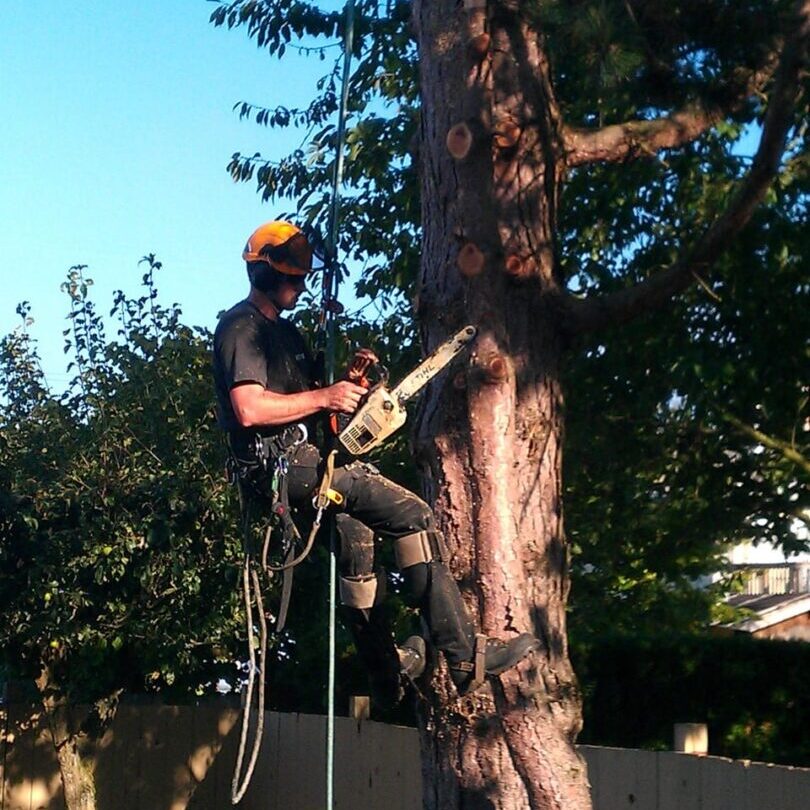Tree Pruning for Beginners: Everything You Need to Know
*Disclaimer: the content found on this page has not yet undergone official review.
If you’re like most homeowners, you probably don’t think about tree pruning until it’s too late. By then, the trees in your yard have become overgrown and are in need of a major trim. Pruning is an important part of taking care of your trees, and it should be done on a regular basis. In this blog post, we will discuss everything you need to know about tree pruning. We’ll talk about when to prune your trees, how to prune them, and what types of tools you will need. So if you’re ready to learn more about tree pruning, keep reading.
What is tree pruning and why is it important?
Tree pruning is the process of trimming away dead or overgrown branches from a tree. This helps to promote growth and ensure that the tree remains healthy. Pruning also helps to improve the appearance of the tree and can make it safer for people and property.
There are two main types of pruning: formative pruning and corrective pruning. Formative pruning is typically done when the tree is young, in order to shape its growth. Corrective pruning is done in order to remove damaged or dangerous limbs.
Proper pruning techniques are essential in order to avoid damaging the tree. When done correctly, pruning can help a tree live a long and healthy life.
Pruning is an important part of tree care and can be done for a variety of reasons. Some common reasons for pruning include:
To improve the tree’s structure
Pruning a tree means cutting off some of its branches. This makes the tree healthier and stronger. It also helps the tree to grow in a certain direction.
To allow light to reach inside the tree canopy
Tree pruning is a way to make sure that the inside of the tree is well-lit. This is done by removing branches that are blocking the light from getting in.
To reduce the size of the tree
Sometimes people need to cut down the size of a tree. They do this by pruning the tree. This means that they cut off some of the branches and leaves so that it is smaller. Other trees are too big and are causing problems for the house or power lines. Or maybe the tree is sick and needs to be cut down so that it doesn’t spread the disease to other trees.
To remove dead or dying branches
To keep your tree healthy, you might need to remove dead or dying branches. Dead branches can provide entry points for pests and diseases, and they can also be hazards if they fall on people or property.
To improve the tree’s appearance
Tree pruning is a way to make the tree look nicer. It can also improve the tree’s health by getting rid of dead or diseased branches. If you have a young tree, pruning can help it grow in the right direction.
The different types of cuts
There are several different types of cuts that can be used, and each has its own benefits.
1. Thinning cuts
Thinning cuts are made to remove selected branches throughout the tree. This type of cut improves the tree’s structure and allows light to reach inside the tree canopy.
2. Heading cuts
Heading cuts are made on the ends of branches and cause them to grow back denser. This is the most common type of pruning and is used to control the shape and size of a tree.
3. Topping cuts
Topping, or “hat-racking”, is a type of heading cut that removes the entire top of the tree. This is done to stunt growth or for power lines. It’s a bad idea and can make your tree more susceptible to disease and damage in storms. Topping cuts involve removing the entire top of the tree, which is often done for aesthetic reasons.
4. Backing cuts
Backing cuts are made on the main trunk of the tree and are used to reduce its size. They are made at an angle of 45 degrees to the trunk and should be no more than one-third of its diameter.
Pruning young trees vs mature trees – what’s the difference?
When pruning trees, it’s important to take the age of the tree into account. Young trees should be pruned to encourage proper growth, while mature trees should be pruned to remove dead or diseased limbs.
Both types of pruning can be done with a hand saw or pruning shears. However, it’s important to exercise caution when pruning mature trees, as they can be more fragile and prone to damage.
When pruning young trees, the goal is to create a strong framework of limbs. This can be done by pruning off weak or competing limbs, as well as any limbs that are growing in the wrong direction. It’s also important to avoid pruning too much, as this can damage the tree.
When pruning mature trees, the goal is to remove any dead, dying, or diseased limbs. This helps to keep the tree healthy and prevents the spread of disease. In addition, pruning can also help to improve the tree’s appearance and increase sunlight penetration.
When should you prune your trees and how often should you do it?
Pruning is a critical part of maintaining trees. It helps to remove dead or diseased branches, encourages new growth, and promotes the overall health of the tree. But when is the best time to prune, and how often should you do it?
When pruning trees, it is important to consider the type of tree, the time of year, and the pruning method. For example, deciduous trees should be pruned in late winter before new growth begins, while coniferous trees can be pruned at any time of year. The pruning method will also vary depending on the type of tree; for example, large branches should be cut using a saw, while smaller branches can be snapped off by hand. Pruning often needs to be done on a yearly basis in order to keep trees healthy and looking their best.
How do I know which branches to cut when pruning a tree?
When pruning a tree, it is important to cut the correct branches in order to maintain the tree’s shape and health. In general, you should cut dead or diseased branches, crossing branches, and branches that are too close to the trunk.
What types of tools will you need?
When pruning a tree, there are a few different types of tools that can be used. For smaller branches, pruning shears can be used to make clean cuts. If the branch is too thick for pruning shears, then a pruning saw or pole pruner may be necessary.
The pruning saw is a handheld saw with a sharp blade, while the pole pruner is a long pole with a cutting blade at the end. Both of these tools can be used to cut through thick branches. Finally, if the branch is too high to reach with either of these tools, then a ladder or cherry picker may be needed.
When using any of these tools, it is important to exercise caution and avoid damaging the tree trunk or surrounding branches. With the proper tools and techniques, tree pruning can be safely performed to improve the health and appearance of the tree.
How to prune a tree in 5 easy steps
1. Decide what type of cut to make
When pruning a tree, you need to decide what type of cut to make.
2. Cut off any dead or damaged branches
This will help the tree focus its energy on healthy growth. You should also cut any branches that are growing into the center of the tree. These branches can crowd out other growth and cause damage to the tree. Finally, you should cut any branches that are rubbing against each other. This can damage the bark and impede growth.
3. Make the cuts at an angle, using sharp pruning shears
This will help the tree heal properly. Be sure to clean the shears after each cut to prevent the spread of disease.
4. Remove suckers and water sprouts
Suckers are young shoots that come up from the roots or from the trunk of the tree. They suck nutrients away from the tree and can weaken it. Water sprouts are shoots that grow straight up from branches. They also take away nutrients and can make the tree weak. You should remove these shoots to help keep the tree healthy.
5. Prune during the dormant season
Prune your tree during the time when it is not active. This is typical during the late fall or early winter. Pruning during this time will help reduce stress on the tree.
Also, prune your tree when it is young. This will help establish a strong structure for the tree. It is best to prune the tree when it is between one and three years old.
Proper tree pruning techniques
While it may seem like a daunting task, pruning is actually quite simple if you follow a few basic guidelines.
First, always use sharp pruning tools to avoid damaging the bark. Second, make sure to prune branches at the correct angle – too steep an angle can cause the branch to re-grow in an undesirable direction. Finally, don’t be afraid to prune back heavily – pruning stimulates new growth, so your tree will quickly bounce back.
With a little time and effort, you can keep your trees healthy and looking their best with proper pruning techniques.
Common mistakes people make when pruning trees
One of the most common mistakes people make when pruning trees is cutting too much. It is important to remember that pruning is not just about trimming branches – it is also about promoting the growth of the tree. As a result, pruning should be done with care, and only the necessary amount should be removed.
Another mistake people make is incorrect pruning technique. When pruning, it is important to use the proper tools and make clean cuts at the right angle. Otherwise, you risk damaging the tree or stimulating excessive growth.
Finally, many people fail to consider the time of year when pruning their trees. While some species can be pruned at any time, others are more sensitive to seasonal changes. As a result, it is important to consult a professional before pruning any tree.
By following these simple tips, you can avoid making common mistakes and ensure that your trees stay healthy and thrive.
When to call in a professional arborist for help?
You should call in a professional arborist if you’re not sure how to safely prune a tree, if the tree is very large or if it’s in a difficult location. Professional arborists have the experience and equipment to handle even the most challenging jobs.
If you decide to tackle the job yourself, be sure to do your research first. There are a few different ways to prune trees, and each has its own purpose. Selecting the right method will ensure that your tree stays healthy and looks its best. And as with any project, always use caution and follow the manufacturer’s instructions when using tools.
Final thoughts
Prune your trees regularly for a beautiful, healthy landscape. When done correctly, pruning is an easy and effective way to improve the appearance of your trees and keep them healthy. With a little time and effort, you can keep your trees looking their best.
If you have any questions or would like a free quote, contact us at (604) 762-6538 and we’ll be happy to help. We are professional arborists here at Heritage Tree Services, striving to be in constant communication with our customers until the job is done.

